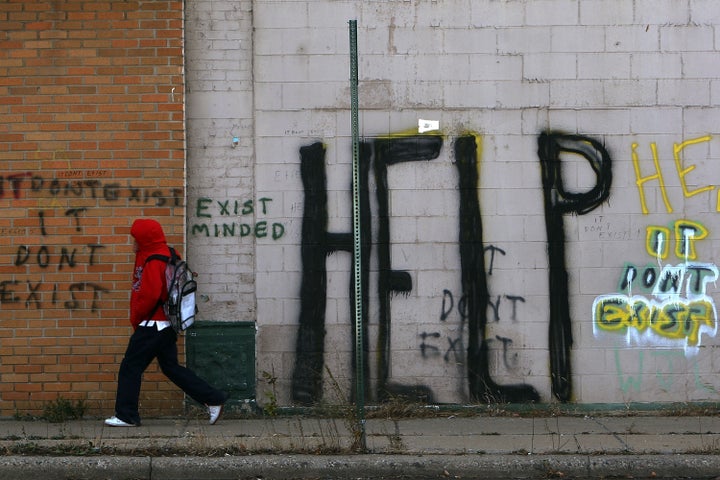
People love ratings. You can find a top ten list for just about anything. Of course, part of why we love ratings is because there is a degree of arbitrariness in almost any ranking algorithm, leaving room for controversy and debate.
While rating a person's social media Klout is as trivial as poverty is devastating, rating social media popularity and finding the U.S. poverty rate do have something in common. It's pretty much impossible to figure out exactly what the "true" rate is.
The United States has measured poverty according to the same formula for the last five decades. By that antiquated measure, which only considers the cost of food irrespective of geography or other costs of living, there were 46 million people living in poverty in 2010.
For years, academics and government statisticians have been developing and testing alternative poverty measures. Indeed, the individual responsible for developing our current poverty measure has long called for a more modern approach.
Recently, the U.S. Census Bureau published a recalculated poverty rate for 2010, using an alternative method called the Supplemental Poverty Measure (SPM). The SPM considers more than just food costs in its calculation, including the cost of clothing, shelter, and utilities as well as adjusting for regional differences in the cost of living. Additionally, while the current poverty measure only considers gross, untaxed income, the SPM accounts for taxes paid, and also credits individuals and families with income supplements like cash-aid welfare and food stamps.
According to the SPM calculation, there were 49.1 million people in poverty in 2010, 3.1 million more people in poverty than were estimated using the current measure. Even though the SPM method results in an overall higher poverty rate, the SPM suggests lower rates of youth poverty than the current measure, and higher rates of poverty for the elderly, whites, Asians, and Hispanics. Indeed, the decrease in the youth poverty rate is significant, from 22.5 percent to 18.2 percent.
Considering how the SPM calculates poverty, the decrease in youth poverty is not surprising. The SPM includes government income supplements and cash transfers as part of household income. Since these programs are highly targeted at families with dependent children, the SPM rightly identifies that these interventions are effective at lifting eligible recipients out of poverty. Less effective are anti-poverty efforts targeting seniors, as the SPM estimates that 15.9 percent of seniors live in poverty, as opposed to 9 percent under the current method.
So, is the SPM a better measure of the poverty rate? Even if it is, does it matter? Information only has value if it helps us make better, more high impact decisions. Concluding there are 3 million more people living in poverty than we initially thought probably doesn't make any difference from a policy planning perspective. Poverty advocates will still do what they do, and poverty deniers will still try to stiff the poor.
Considering how much more comprehensive the SPM is than the current poverty measure, there is remarkably little difference between the two calculated poverty rates. Instead, the real value of the SPM is what it tells us about who the poor are. According to this new measure, there are fewer young people who are poor than we thought, and more poor who are elderly, white, Asian, and Latino than originally predicted. These findings of the demographic distribution of poverty do have policy implications, and should factor into the strategic decisions of poverty-advocates and social sector organizations.
Ultimately, all rating systems are controversial, whether rating poverty or the best movies of all time. What shouldn't be controversial is the economic and humanitarian import of combatting poverty. Any way you look at it, whether there are 46 million or 49.1 million poor in the U.S., there is an unacceptable level of human suffering in our country.